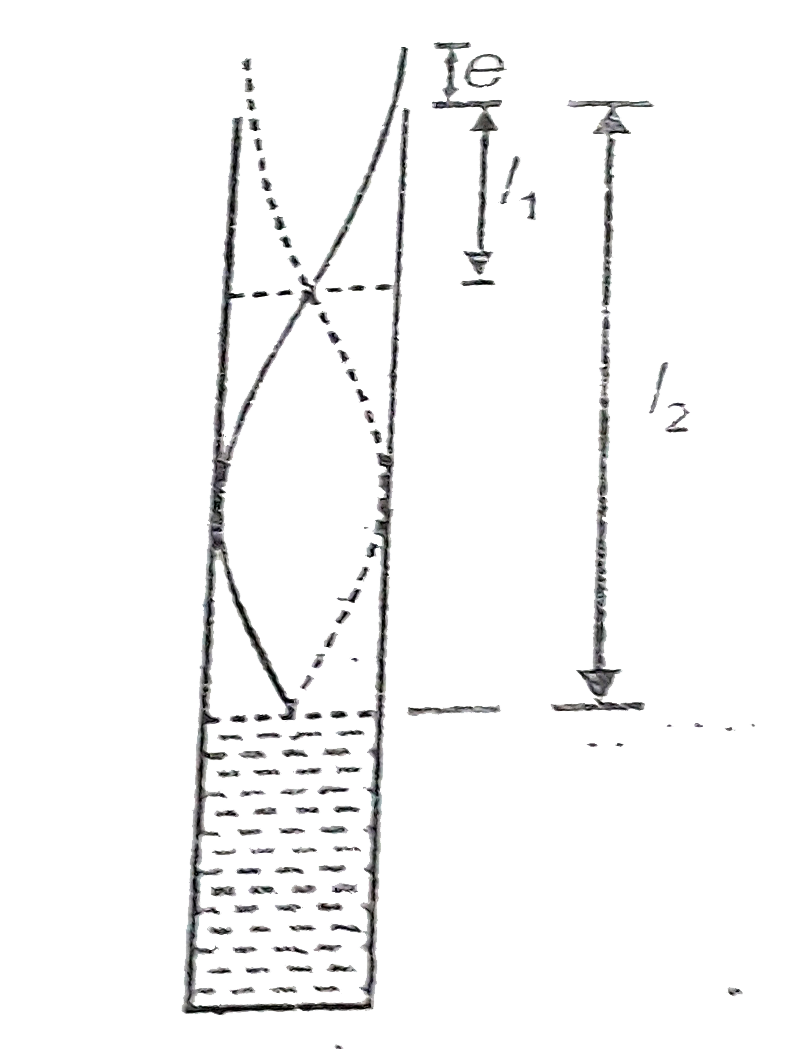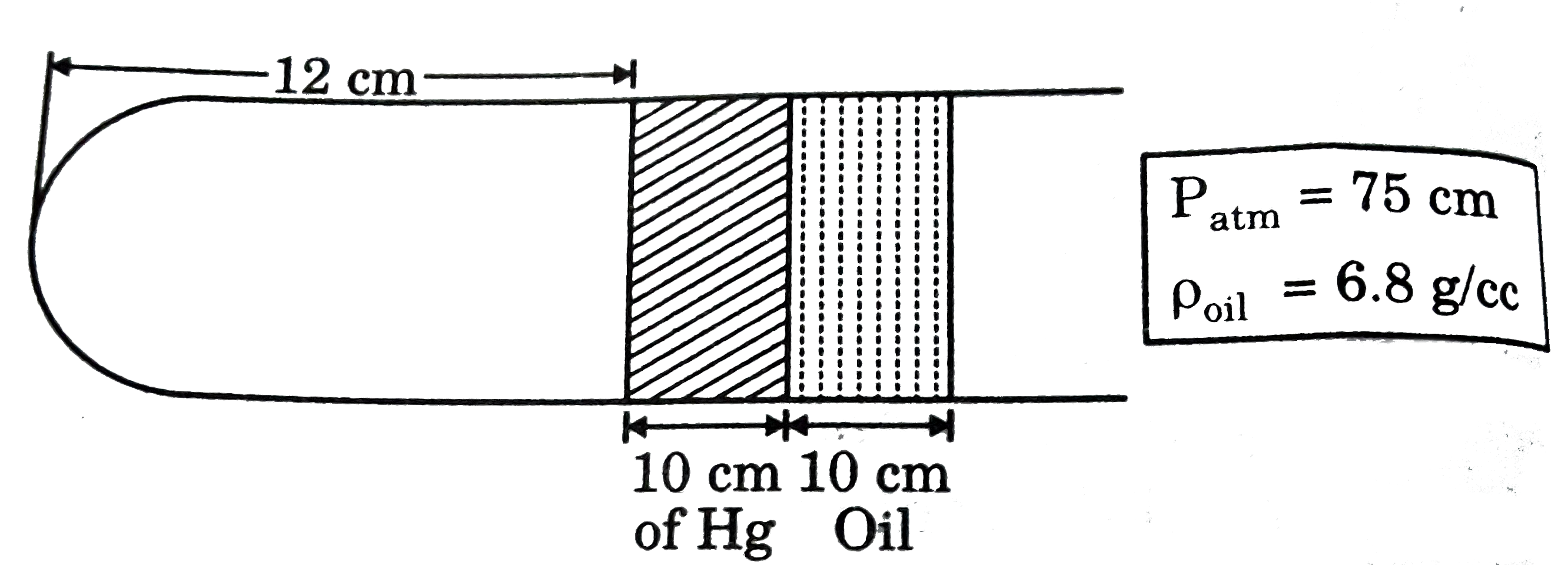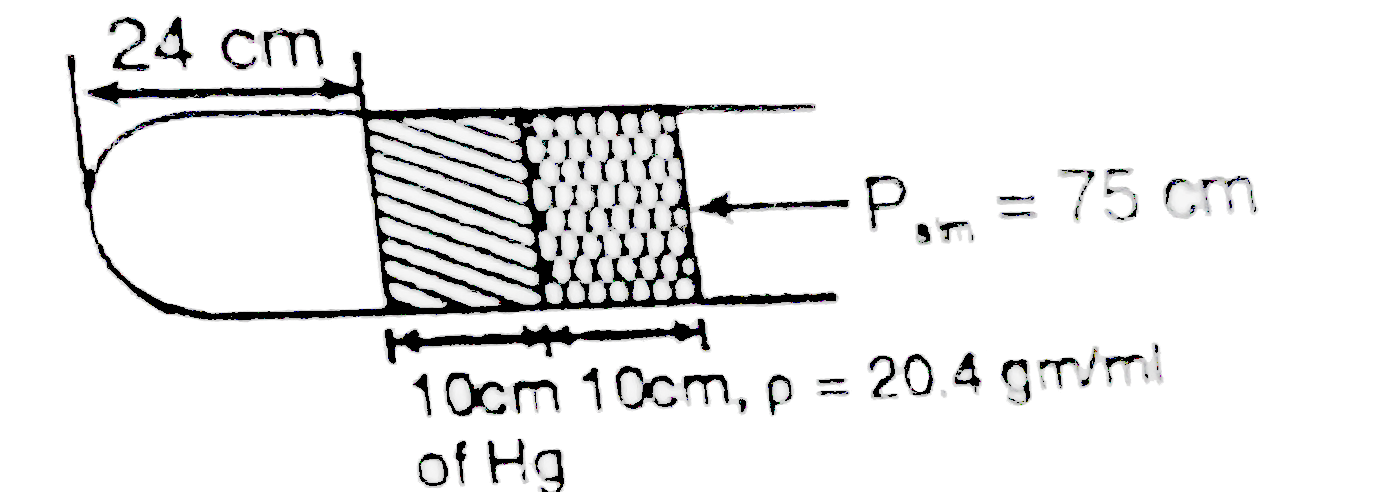The glass tube of a resonance tube apparatus is held vertically and the length of the air column in it can be adjusted by adjusting the water level in the tube using a pipe and funnel arrangement. A tuning fork, of frequency v is sounded above the air column in the tube while the length of the air column is slowly increased, starting with a small value. whenever resonance occurs, it is indicated by a loud sound. the two successive lengths at which resonance occurs are l1andl2. find the speed of sound in air and the end correction for this pipe.

let the end correction be e. the results of the experiment just described have been summarised in the figure below.
Now l1=e=λ4 . . . (i)
and l2=e=3λ4 . . . (ii)
Subtracting (i) and (ii), we get
l2−l1=λ2
or λ=2(l2−l1) . . . (iii)
Hence, the speed of sound v, is given by
V=vλ
or V=2v(l2−l1)
From (i) and (iii), we have
l1+e=λ4=2(l2−l1)4
or e=l2−3l12
Topper's Solved these Questions
- WAVESBOOK - AAKASH INSTITUTECHAPTER - WAVESEXERCISE - Try Yourself
64 Videos
- WAVESBOOK - AAKASH INSTITUTECHAPTER - WAVESEXERCISE - Assignment (Section-A)
55 Videos
- WAVE OPTICSBOOK - AAKASH INSTITUTECHAPTER - WAVE OPTICSEXERCISE - Assignment (Section-J (Aakash Challengers question))
1 Videos
- WORK, ENERGY AND POWERBOOK - AAKASH INSTITUTECHAPTER - WORK, ENERGY AND POWEREXERCISE - Assignment (SECTION - D)
15 Videos
Similar Questions
Knowledge Check
In the resonance tube experiment , maximum sound is heard, when the lengths of the resonating air columns are
Aλ4,λ2,3λ4Bλ2,λ,3λ2Cλ4,3λ4,5λ4Dλ2,3λ2,5λ2A tuning fork of frequency n resonates with a closed organ pipe when the length of the shortest air columns are a and b respectively, then the speed of sound in air will be
An(a-b)Bn(b−a)2C2n(b+a)D2n(b-a)In a resonace tube experiment the lengths of the air columns for the first and second resonace differ by 25 cm . What is the wavelength of the sound in the tube ?
A20 cmB30 cmC40 cmD50 cm
If the air column in a pipe which is closed at one end, is in resonance with a vibrating tuning fork at a frequency 260 Hz, then the length of the air column is
View SolutionAn air column closed at one end and resonates with tuning fork of frequency n when its lengths are 45cm and 99cm and other length in between these values the wavelength of sound in the air column is
View SolutionThe air in a pipe closed at one end is in resonance with a vibrating tuning fork of frequency 170 Hz. If the velocity of sound in air is 340 m/s, the length of the vibrating air column is
View SolutionA tuning fork of frequency n is held near the open end of tube, the tube is adjusted until resonance occurs. If the two shortest lengths to produce resonance are L1andL2 , then the speed of the sound is
View SolutionA tuning fork of frequency 500Hz is sounded and resonanace is obtained at 17cm and 52cm of air column respectively in a resonating air column apparatus. The velocity of sound in air is
View Solution


